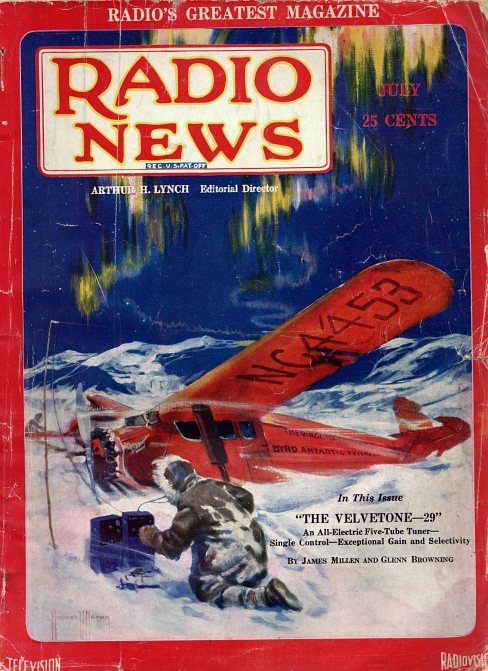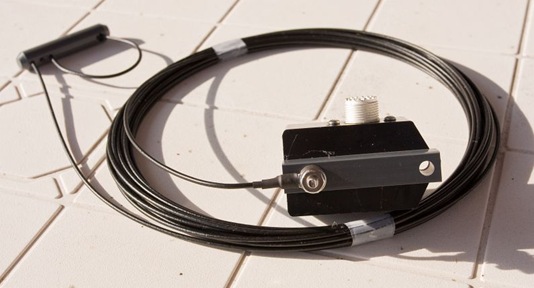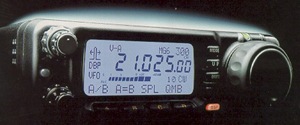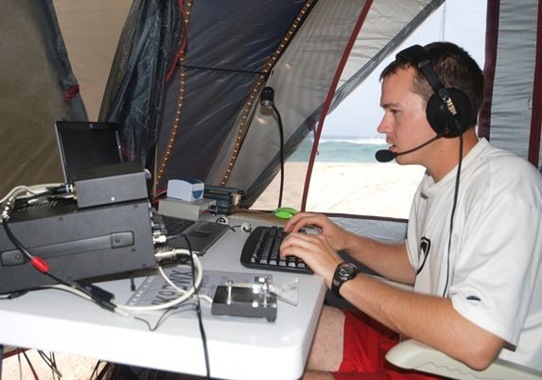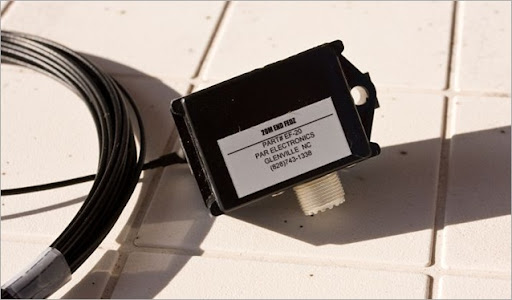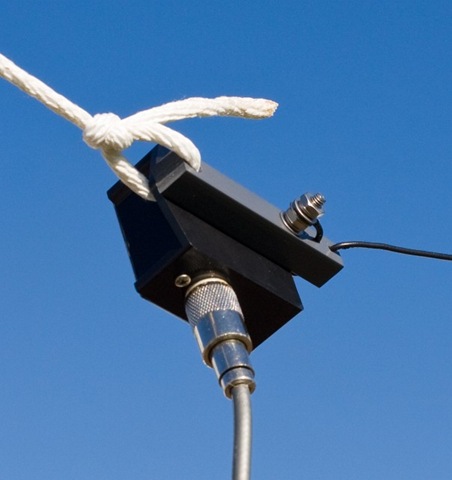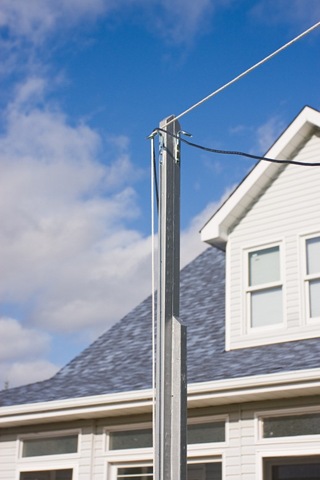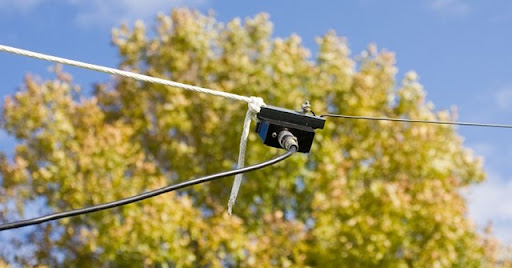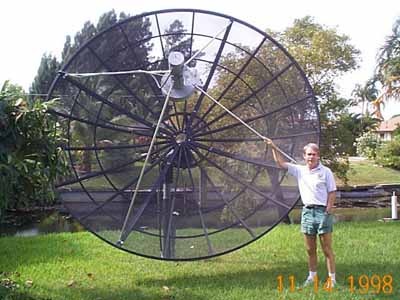 I conducted an email interview this afternoon with Dale Parfitt of PAR Electronics, the maker of the wondrous PAR EndFedz end fed dipoles. Dale's company also manufactures filters, mostly for the commercial market and military.
I conducted an email interview this afternoon with Dale Parfitt of PAR Electronics, the maker of the wondrous PAR EndFedz end fed dipoles. Dale's company also manufactures filters, mostly for the commercial market and military.
I own three of the PAR EndFedz, the EF-20, EF-30 and the EF-40 versions. In my next post I’ll show how easy these are to install and the post will include photos and close-ups of the antennas.
Here’s the interview.
Dale, how did you get started?
I received a BSEE from Syracuse U in '71 and an MSEE in 73. After a short stint with Sperry Flight Systems in Phoenix AZ, I went to work for Avanti R&D in their antenna lab. One of my patents is for the original On-Glass antenna. It came out of a need for me to operate 2M from my Corvette. The patent describes an end fed half wave antenna where the radiator and matching means are separated by a dielectric (glass in this case). That patent is now owned by The Allen Group. It was a strong patent, and imitators were forced to use inferior concepts that gave the ON-Glass antennas a poor reputation. It is unfortunate, because our original design (still marketed by Antenna Specialists) is NOT a compromise antenna and delivers superior performance. This basic design forms the basis for the EndFedz series. I enjoy hiking (actually running) the mountains of NC. I often take a rig with me and operate on stops. I needed an easy to deploy antenna.
Tell me a bit about your amateur radio background.
I became interested in amateur radio when I was 11 or so. Adult Ed in Elmira NY offered ham classes taught by W2HQY (SK) and W2ZBD (SK). The rub was that you had to be 18 years old to attend. So, my Mom who was at that time completing here BS in Nursing from Syracuse signed up and "baby sat" me. This was in 1963 or so. I was assigned a novice call WV2YPY. Back then, the novice was good for 1 year and non-renewable sink or swim. I loved CW and so the upgrade to WA2YPY came easily 6 months later. I was very active on HF DX and later VHF weak signal. During my college years I was totally inactive outside of an occasional stint at the SU club station.
Many years later my passion to VHF/UHF returned and I still operate a KW on 80-->6M [PRO III + SPE Expert solid state amp]. But my first love is 1296MHz EME where I am a medium sized station with a 14' dish and 400W homebrew solid state at the dish.
What is the market for the PAR antennas, and filters?
Our core business remains commercial. PAR filters are everywhere from flying in space to airports to FM broadcast stations to NASA's lightning detection system: http://www.nasa.gov/missions/science/lightning_warn.html
The market appears bottomless. Design is done with Eagleware's Genesys software - makes me look smart. Over the years I have become a decent machinist and have added digital capabilities to our mills and lathe.
Our Omniangle antennas virtually own the RFID industry because of their near-perfect omni pattern and zero feedline radiation. The EndFedz are used by our military and amateurs around the world.
How are your antennas used worldwide?
I have no clue as to how the military uses them - I don't even ask. The vast majority of EndFedz are in amateur use.
We do have piles of filters in Asia minor used in a system that measures snow pack data and transmits the collected via random meteor scatter. The filter criteria are very stringent and obviously, the filters must endure a very harsh environment.
Other filters are in use by militaries around the world for spectrum shaping.
Many years back, the FCC contacted us to design a version of our patented 2M IM filter to relieve the problem of pagers interfering with commercial boats on the Mississippi. Today, there may not be a commercial boat on that river that does not have a pair of our filters on board.
Where is PAR Electronics headed?
Hard to say. I have a lot of other interests that have been put on hold while PAR demands 80+ hour weeks. A number of very novel antennas have never seen the light of production simply because we cannot handle the order levels they would create. At some point, I'll turn the reigns over to a younger fellow.
How many people does PAR Electronics employ?
Very few. I am a perfectionist who does not play well with others. So, while I do bring people in to do some of the mundane milling and lathe work, 90% of the work is done by me from 9AM to 2AM 6 days/week. I am the ultimate micromanager (not a good thing) and instead of critiquing others' work- I just do it myself.
Are you surprised by the success of your company?
Most of the time, I don't see the forest for the trees. But when I look at the bottom line- yes, it is surprising. I believe a very large part of our success is treating our clients like family. We regularly stay late to make sure someone has a certain product for vacation etc. Anyone can do this if they are willing to go the extra mile for their clients. This is getting harder and harder as our commercial segment takes up more and more of the time we traditionally devoted to amateur radio - but we remain committed to the amateur segment.
Any other interesting facts about PAR or yourself.
My shop, in addition to the lab and machine shop has a beautiful Olhausen billiards table for stress relief. I have very little interest in modern gear (aside what is needed for EME) and a passion for restoration of the tube gear of days gone by. I love to build and make the end product look as though it came off a production line:
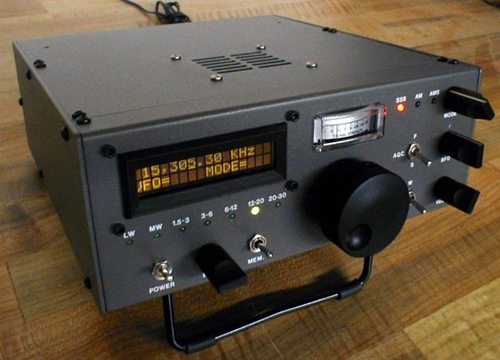 DDS HF general coverage RX.
DDS HF general coverage RX.
My version of a solid state Drake 2B with added bells and whistles.

So there you have it. A great interview with Dale Parfitt creator of the PAR EndFedz series of end fed dipoles.
http://www.parelectronics.com/
And some reviews of the PAR EndFedz on Eham.
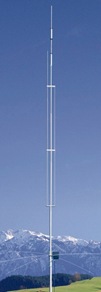 My R6000 is several years old now. I took it down 2 years ago intending to repair and refurbish it in a few weeks. Typical of my many projects lying around the garage this one always seemed to take longer than usual. If any of you are familiar with the R6000 it is quite a tall antenna. I've had it lying across a portable workbench and plastic lawn chairs for support. Last winter I took the traps inside and spent a couple of weeks cleaning adding new stainless hardware and sealing the traps. The original hardware nuts inside had become corroded due to moisture so they were all replaced. Everything was double checked and then new caps installed and then sealed with Silicone II to waterproof them.
My R6000 is several years old now. I took it down 2 years ago intending to repair and refurbish it in a few weeks. Typical of my many projects lying around the garage this one always seemed to take longer than usual. If any of you are familiar with the R6000 it is quite a tall antenna. I've had it lying across a portable workbench and plastic lawn chairs for support. Last winter I took the traps inside and spent a couple of weeks cleaning adding new stainless hardware and sealing the traps. The original hardware nuts inside had become corroded due to moisture so they were all replaced. Everything was double checked and then new caps installed and then sealed with Silicone II to waterproof them.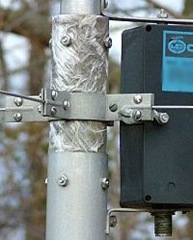
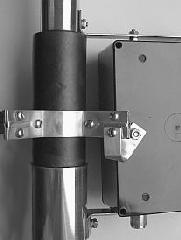 Here's what the repair looks like. Again this is a Cushcraft R5 photo the repair looks very similar to my Cushcraft R6000. The R6000 is still sold retail in Canada for about $450CDN. I purchased my copy second hand and used it for a season out here till the brutal winds loosened everything up. Every piece of hardware was replaced with stainless steel. In a refurbishment like this a Dremel tool in invaluable for cutting new stainless steel hardware down to size and removing corrosion and polishing. The R6000 is a great performer and have worked Antarctica using 20 watts on PSK. The R6000 uses a set of elevated ground radials and there's no need for installing a ground radial system. The antenna instructions require the antenna to be at least 10 feet off the ground. I have mine sitting about 4.5 feet above ground but may elevate that when I erect the antenna this coming week. I'll post actual close-up pictures when I get it mounted in place. I also intend to add three guying ropes to stabilize the antenna during high winds.
Here's what the repair looks like. Again this is a Cushcraft R5 photo the repair looks very similar to my Cushcraft R6000. The R6000 is still sold retail in Canada for about $450CDN. I purchased my copy second hand and used it for a season out here till the brutal winds loosened everything up. Every piece of hardware was replaced with stainless steel. In a refurbishment like this a Dremel tool in invaluable for cutting new stainless steel hardware down to size and removing corrosion and polishing. The R6000 is a great performer and have worked Antarctica using 20 watts on PSK. The R6000 uses a set of elevated ground radials and there's no need for installing a ground radial system. The antenna instructions require the antenna to be at least 10 feet off the ground. I have mine sitting about 4.5 feet above ground but may elevate that when I erect the antenna this coming week. I'll post actual close-up pictures when I get it mounted in place. I also intend to add three guying ropes to stabilize the antenna during high winds.
